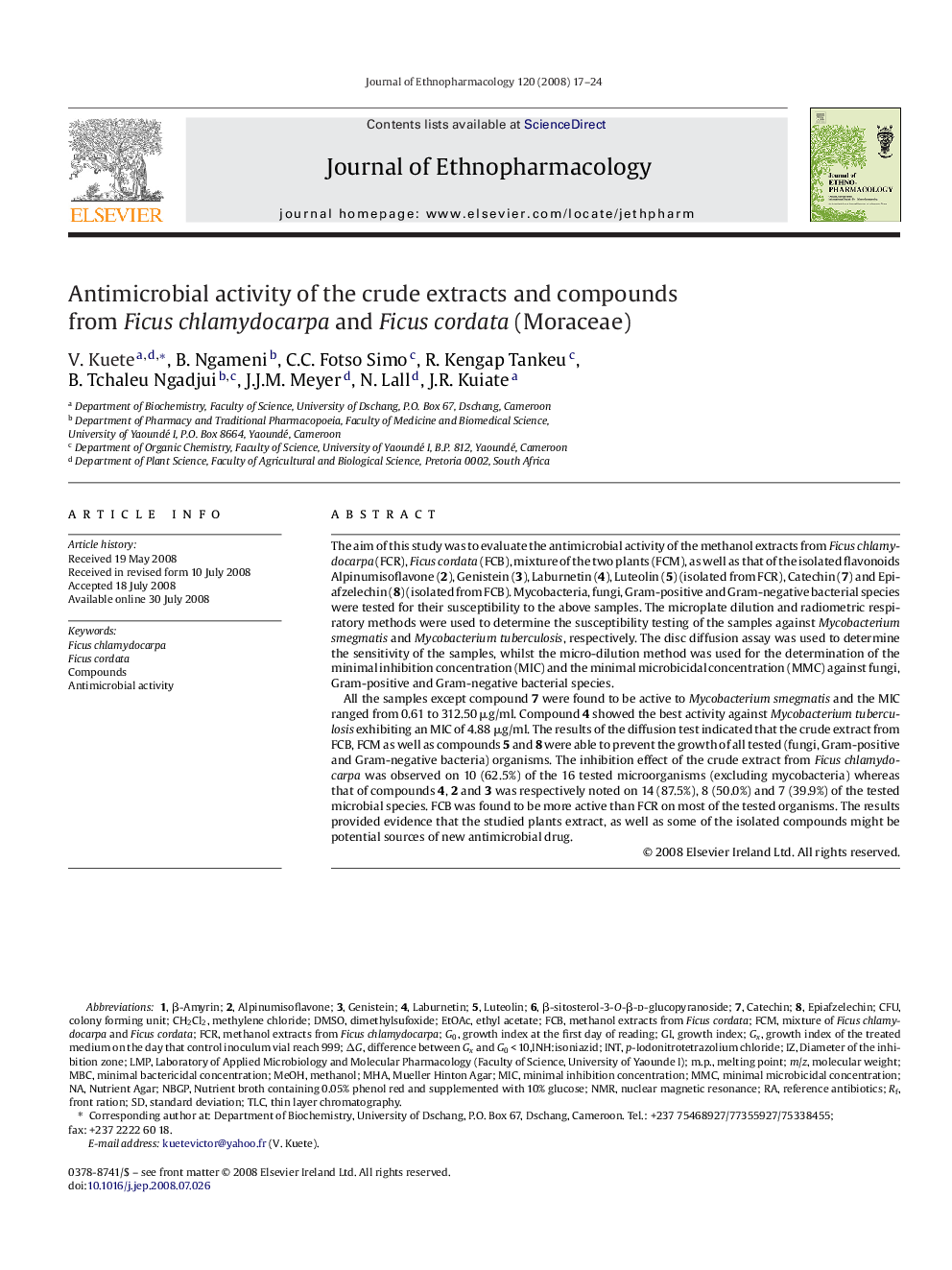| کد مقاله | کد نشریه | سال انتشار | مقاله انگلیسی | نسخه تمام متن |
|---|---|---|---|---|
| 2547432 | 1124058 | 2008 | 8 صفحه PDF | دانلود رایگان |

The aim of this study was to evaluate the antimicrobial activity of the methanol extracts from Ficus chlamydocarpa (FCR), Ficus cordata (FCB), mixture of the two plants (FCM), as well as that of the isolated flavonoids Alpinumisoflavone (2), Genistein (3), Laburnetin (4), Luteolin (5) (isolated from FCR), Catechin (7) and Epiafzelechin (8) (isolated from FCB). Mycobacteria, fungi, Gram-positive and Gram-negative bacterial species were tested for their susceptibility to the above samples. The microplate dilution and radiometric respiratory methods were used to determine the susceptibility testing of the samples against Mycobacterium smegmatis and Mycobacterium tuberculosis, respectively. The disc diffusion assay was used to determine the sensitivity of the samples, whilst the micro-dilution method was used for the determination of the minimal inhibition concentration (MIC) and the minimal microbicidal concentration (MMC) against fungi, Gram-positive and Gram-negative bacterial species.All the samples except compound 7 were found to be active to Mycobacterium smegmatis and the MIC ranged from 0.61 to 312.50 μg/ml. Compound 4 showed the best activity against Mycobacterium tuberculosis exhibiting an MIC of 4.88 μg/ml. The results of the diffusion test indicated that the crude extract from FCB, FCM as well as compounds 5 and 8 were able to prevent the growth of all tested (fungi, Gram-positive and Gram-negative bacteria) organisms. The inhibition effect of the crude extract from Ficus chlamydocarpa was observed on 10 (62.5%) of the 16 tested microorganisms (excluding mycobacteria) whereas that of compounds 4, 2 and 3 was respectively noted on 14 (87.5%), 8 (50.0%) and 7 (39.9%) of the tested microbial species. FCB was found to be more active than FCR on most of the tested organisms. The results provided evidence that the studied plants extract, as well as some of the isolated compounds might be potential sources of new antimicrobial drug.
Journal: Journal of Ethnopharmacology - Volume 120, Issue 1, 30 October 2008, Pages 17–24